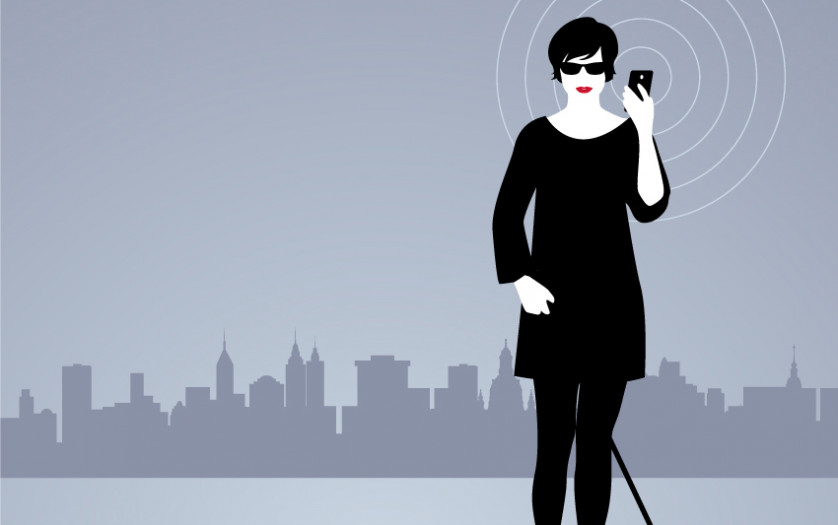Accessible ICT for Disaster Risk Reduction

Disasters whether from natural or human influences have a huge impact on infrastructure and livelihoods. Natural disasters cannot be prevented but it’s impacts on human lives can be significantly reduced through disaster management and methods of disaster risk reduction.
One of the most high-risk groups during any disaster, natural or human influenced are people with disabilities because of inaccessible environments, socio-economic factors among other factors. Additionally, people with disabilities are often not involved in emergency planning and preparedness leaving them behind.
Disaster Risk Reduction (DRR)
Disaster Risk Reduction (DRR) is the concept of reducing the effects and risk of disasters through organised efforts that manage the causal effects of disasters. Rooted in sustainable development, DRR includes disaster management, disaster mitigation and disaster preparedness.
Inclusive disaster risk reduction is a practice followed through the spirit of the United Nations Convention for Persons with Disabilities (UNCRPD), specifically articles 11 and 32 which refer to ‘Situations of Risk and Humanitarian Emergencies’ and ‘International Co-operation’.
Inclusive DRR recognizes all as a part of a community and pays specific attention to the vulnerabilities of persons with disabilities in a disaster.
The role of ICT in disaster risk reduction
One of the biggest challenges during an emergency or a disaster is the flow of vital information to those who may be directly impacted. People with disabilities often fail to act upon the warnings of a disaster due to the inaccessibility of the delivery of information and communication. For example, people who are deaf or have a hearing impairment cannot obtain the necessary information since the broadcast through television or radio may not necessarily be accessible.
To rectify these challenges, an accessible ICT eco-system that specifically focuses on emergency response and preparedness and which is also capable of operating within limited power and resources is the need of the hour.
ICT can also play a huge role in early warning systems for people with disabilities. There are several best practices from around the world which can serve as examples for countries, companies and communities and ensure that no one gets left behind during any crisis. While some are mobile applications and other form of technologies, many are just practices that need to become a habit for broadcasters and those responsible for information flow, such as captioning and subtitling, insertion of a sign language inset etc.
Examples and good practices of ICT and disaster preparedness
Get ready, get thru (New Zealand)
An initiative by the government of New Zealand, Get ready get thru is a website that contains useful information on natural disasters, its impacts and gives tips and advise on how to be better prepared if in such a situation. The information on the website is available in a range of accessible formats and different languages. (www.getthru.govt.nz)
Japan Plus Voice
PlusVoice Co, a Japanese company offered free remote video relay services for people who are deaf or have a hearing impairment in areas hit by earthquakes and a tsunami in Japan. Sign language interpreters helped people in different provinces gain access to information via their smartphones as soon as the disasters struck.
Red Cross – The Red Cross has a range of mobile applications available which alerts the user of a disaster so that there is a greater response time for preparing oneself. The apps range from general alerts of severe and emergency weather alerts and specific apps for tornadoes, hurricanes, earthquakes and floods. (www.redcross.org)
Other ways in which technology can be extremely useful for people with disabilities during the disaster cycle are the use of smartphones, smart homes, accessible public announcements (speech to text/text to speech) and home safety alerts.
It is imperative that early warning systems are made accessible for people with disabilities and that any kind of information flow is available to all. It is also important for people with disabilities to be important actors in the process of risk preparation and emergency response. ICT is constantly evolving and therefore it is now necessary to make inclusive ICT a mandatory factor during any dialogue related to disasters and emergencies. There are enough good practices available which are cost effective and can be easily replicated in local contexts.
email: aqeelqureshi@techbility.com
Featured Stories
-
 Beyond awareness – Developmentally disabled people need protection
Beyond awareness – Developmentally disabled people need protection
-
 Limiting the vote for individuals with intellectual disabilities is limiting democracy
Limiting the vote for individuals with intellectual disabilities is limiting democracy
-
 Embracing your identity: Learning to live and thrive with a disability
Embracing your identity: Learning to live and thrive with a disability
-
 I finally got hearing aids at age 26, after a lifetime of feeling stigmatized
I finally got hearing aids at age 26, after a lifetime of feeling stigmatized
-
 Preparing for the parenting life when you have a disability
Preparing for the parenting life when you have a disability


